Stopping by the woods: discovering the forager’s path
Is it any wonder foraging is on the increase? As we are becoming more educated diners we not only want to sample the best food a restaurant has to offer, but we want to know exactly where it has come from. Not only that, but in an age of mobile technology, sometimes we just want to ‘unplug’ and connect with nature again. Foraging gets you out in the countryside, teaches you about your own environment and can lead to a tasty, field-to-fork lunch!
When city advisor, George Fredenham, and retired master baker, Gerald Waldeck, discovered a mutual love of real, honest food it led to a complete lifestyle change. City life was left behind and the call of the wild heeded. The Foragers was thus born from an idea to offer great, simple food (excellent bread included of course) and make use of foraged ingredients. George has now gathered a foray of foragers who share his vision, one of whom is Richard Osmond. Richard boats many strings to his bow from poetry to pumpkin carving, but he is renowned for his keen knowledge of forest mushrooms and penchant for wild liqueurs.
You can hardly keep George and Richard from the great outdoors and they are key players in a revolutionary movement to bring us all closer to our food. Our interest was certainly piqued, and we wanted to get to know the men behind the brambles:
Can you tell us about your first ever foraging trip? What gave you the bug?
RO: “I remember going on a long walk with my dad when I was about ten and finding a huge horse mushroom, bigger than a dinner plate. We carried it home and he fried it up with butter and garlic. I've learned a lot since then. For instance I know that given the time of year (late spring) and the size of the mushroom, that it was more likely that the mushroom we found was a ‘macro mushroom’, agaricus macrosporus. But although I now have more knowledge about wild food, nothing has taken away that early magic – the thrill of finding something for yourself.
What is the most unusual thing you’ve ever come across?
RO: “There are so many weird and wonderful things out there, but my favourite thing to show people in the wild are dead man's fingers. It's a (non-edible) fungus whose fruitbodies look like the decaying fingers of the dead, clawing their way out of the ground – creepy.”
George, you have quite an inspirational story, leaving a city job to follow your dream. What is a day in your life like?
GF: “It has been far from an easy task to take on and incredibly challenging. I now pack in a lot more than any day, week, month or year working in the city! I have learnt an incredible amount about something I am keenly interested in: my passion has always been in food and knowing where it comes from. In the morning you will probably find me in the hedgerow rummaging for wild plants before heading back over to the back to the pub to make sure it is all set up and organised. Then there’s a bit of number crunching and making sure the business is running smoothly – it’s not all fun and foraging!
Heading into the evening, we all carefully select the drink offer and add it to various wild brews and interesting concoctions that we’ve been developing. But without a doubt, the best part about my new life as a forager is all the amazing people I meet, from customers and keen-to-learn foragers to the staff who share our vision, who constantly have bags of enthusiasm and interest in our concept and are dedicated to delivering the message.”
Why do you think people are drawn to foraging and eating foraged foods?
RO: “Remember the horsemeat scandal, when we found out that our supply chains were hopelessly convoluted and our meat was hopelessly adulterated? Foraging is the opposite of that. As a forager, you are the supply chain. You are present at every stage of the process and know exactly where your food comes from. It provides ultimate traceability. So I think that is a big part of it. But it's also just fantastic fun. It gives a structure to your enjoyment of the outdoors, rewards learning with deliciousness and gives you new eyes for the hedgerow.”
What is your favourite time of year for foraging?
RO: “My favourite time of year for foraging is probably mid-spring. After the depressing slump between the end of mushroom season and the beginning of the New Year’s growth, it's always so refreshing and delightful to see our favourite salad greens, herbs and vegetables reappearing. Life suddenly has purpose again.”
Do you have any good food festivals on your radar to visit this year?
GF: We are hugely involved in all local food and drink festivals in St. Albans and Childwickbury and have been since we started back in 2010. But we love to get stuck into as many things as possible. We’ve been working the Mothership Group who some seriously good venues in London, such as The Book Group and The Queen of Hoxton. The Foragers have been involved in Woodland Trust events, and London Pop-ups with the likes of the Platterform Group alongside and we’re working on our own mini festival – watch this space. The Wilderness Festival was an incredible experience and loads of fun to visit, so we’re hoping to get involved with it this year, and of course all the events we host at the pub are loads of fun and well worth checking out.
I’m thinking about giving it a go, what equipment do I need?
RO: “There are a lot of people selling specialised kit for foraging. You’ll see the likes of special claw-mouthed baskets for skimming berries from bushes and mushroom knives with special brushes for removing soil. Don't get me wrong, we love these gadgets, and we do use them, but really the best thing you can get to start you off is a good quality pocket knife. At The Foragers, we are all huge fans of Opinel knives – those wooden-handled French folding knives originally used for harvesting grapes.”
Can you recommend any good books for me to get stuck into on these dark rainy evenings?
RO: “It’s advisable to read up on UK plant life and what is edible and what is not before you head outside. Now is the perfect time to get reading and plan for trips when the weather is a little balmier.”
Foragers Handbook, Miles Irving





